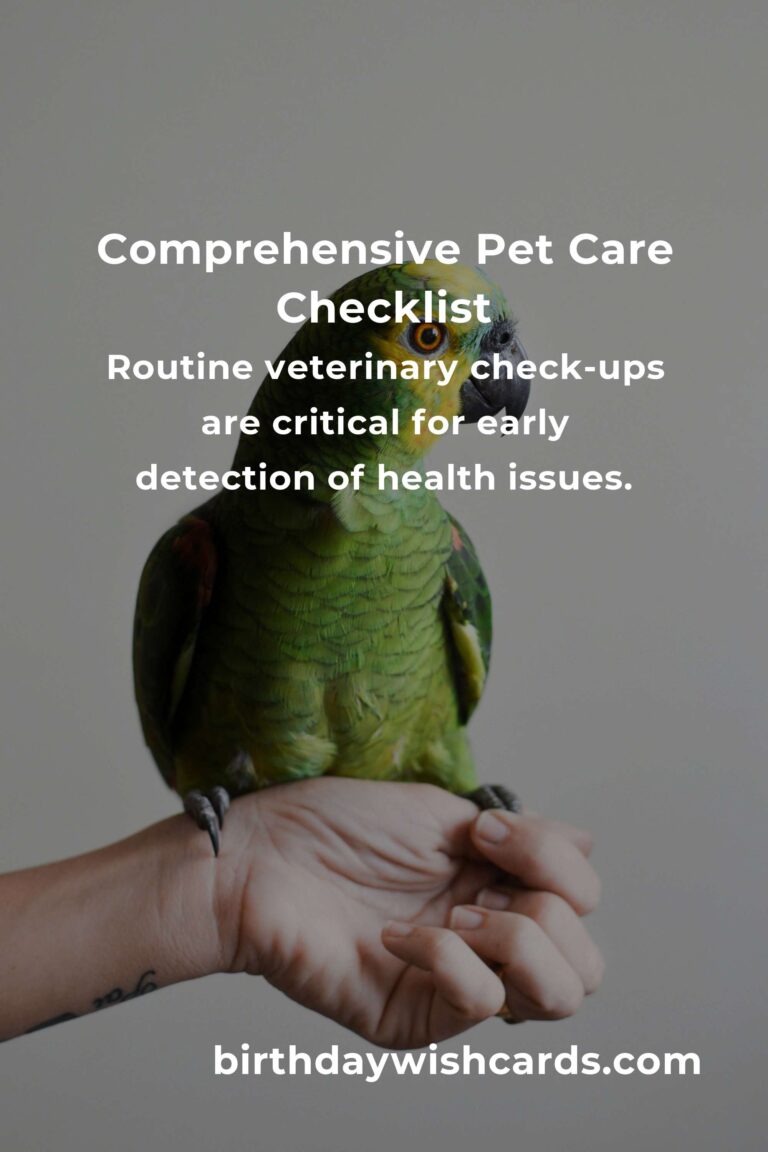
Pets bring joy, companionship, and a sense of responsibility into our lives. Whether you’re a first-time pet owner or have been caring for pets for years, having a comprehensive checklist ensures your furry, feathered, or scaled family member receives the best care possible. This guide will outline key aspects of pet care, from daily routines to long-term health management, ensuring your pet leads a happy and healthy life.
Understanding Your Pet’s Basic Needs
Every pet has unique needs based on their species, breed, age, and health status. Understanding these needs is the first step in providing optimal care. Basic needs usually include proper nutrition, regular exercise, mental stimulation, and routine veterinary care.
Nutrition and Diet
Providing a balanced diet tailored to your pet’s specific needs is crucial. Consult with a veterinarian to determine the best diet for your pet. Consider factors such as age, weight, and any existing health conditions. Always provide fresh water and avoid feeding your pet human food that could be harmful.
Exercise and Physical Activity
Regular physical activity is essential for maintaining your pet’s physical and mental health. Dogs, for example, require daily walks and playtime, while cats might enjoy interactive toys or climbing trees. Ensure that the exercise regime is appropriate for your pet’s age and breed.
Mental Stimulation
Mental stimulation is as important as physical exercise. Engage your pet with puzzles, training sessions, and interactive games to keep their mind sharp. This is especially important for intelligent breeds that might become bored easily.
Regular Veterinary Visits
Routine veterinary check-ups are critical for early detection of health issues. Schedule regular visits and keep up with vaccinations, dental care, and flea and tick prevention. Establishing a relationship with a trusted vet can provide peace of mind and expert guidance.
Grooming and Hygiene
Grooming is not just about appearance; it is also about health. Regular grooming helps prevent matting, controls shedding, and allows you to check for parasites or skin conditions. Depending on your pet’s breed, grooming may include brushing, bathing, nail trimming, and ear cleaning.
Creating a Safe Environment
Ensure your home is pet-friendly. Remove any toxic plants, secure cabinets containing chemicals, and provide a comfortable sleeping area. For outdoor pets, check that fences are secure and that there are no hazards in the yard.
Socialization and Training
Socialization is critical for pets to learn how to interact with people and other animals. Training sessions can also reinforce good behavior and strengthen your bond with your pet. Consistency and positive reinforcement are key to effective training.
Emergency Preparedness
Be prepared for emergencies by having a pet first aid kit and knowing the location of the nearest emergency vet clinic. Keep a list of emergency contacts and ensure your pet’s identification tags are up to date.
Long-term Health Care
Consider the long-term health care of your pet, including senior care. As pets age, their needs change, and they may require special diets or medications. Regular health screenings become increasingly important to manage age-related health issues.
Conclusion
By following this comprehensive checklist, you can ensure that your pet receives the best possible care. Remember, a well-cared-for pet is a happy pet, and happy pets make happy owners. Stay informed, remain attentive to your pet’s needs, and enjoy the rewarding experience of pet ownership.
Pets bring joy, companionship, and a sense of responsibility into our lives. Understanding your pet’s unique needs is the first step in providing optimal care. Regular physical activity is essential for maintaining your pet’s physical and mental health. Routine veterinary check-ups are critical for early detection of health issues. Creating a safe and pet-friendly environment is crucial for your pet’s well-being.
#PetCare #PetHealth #PetOwnerTips #AnimalWelfare #PetLove

